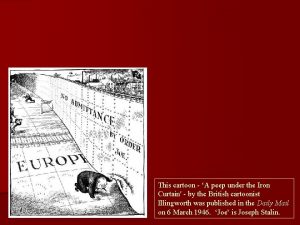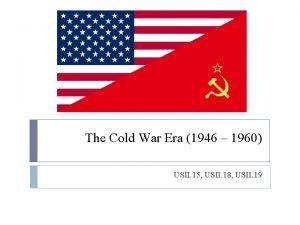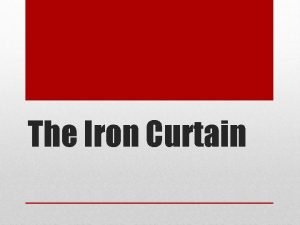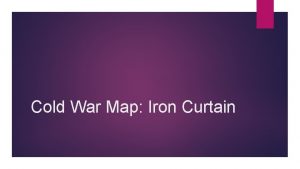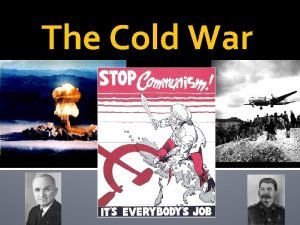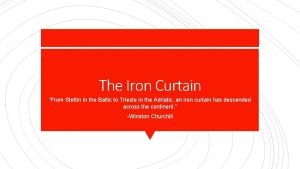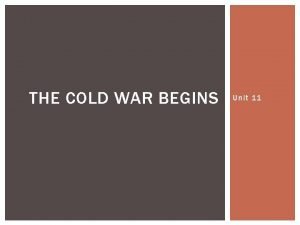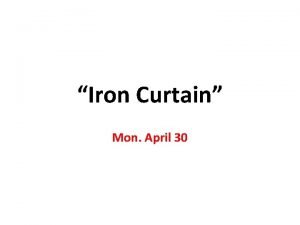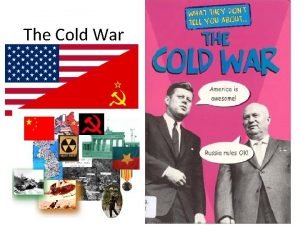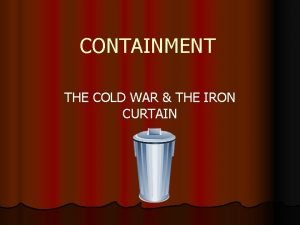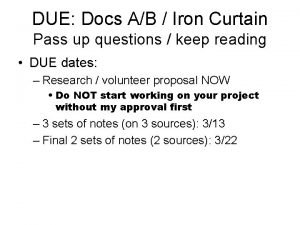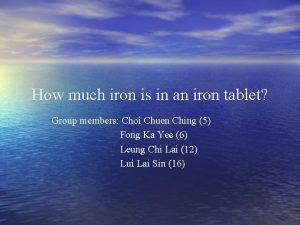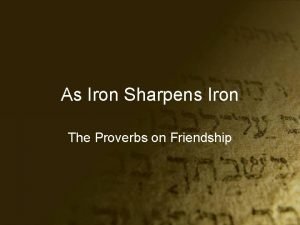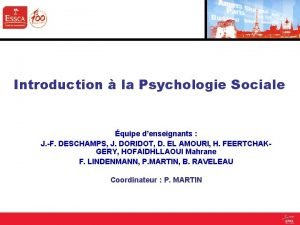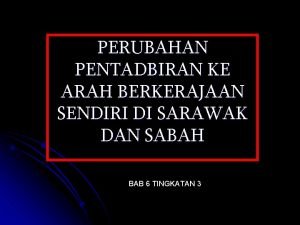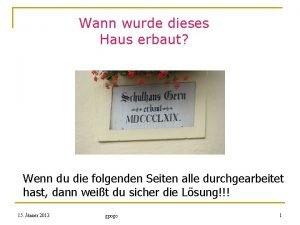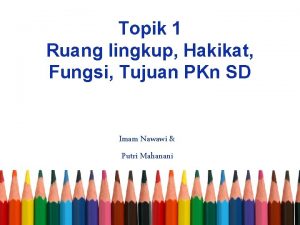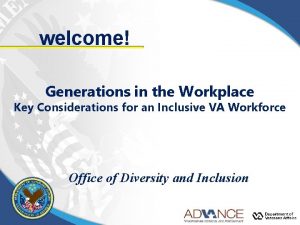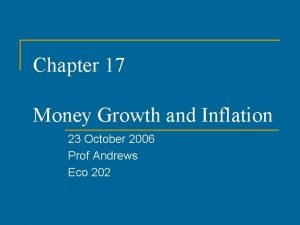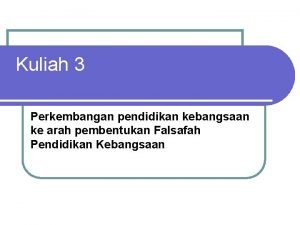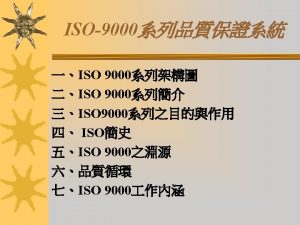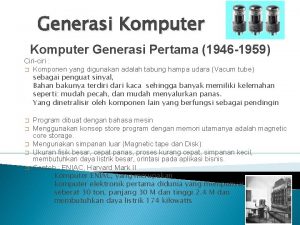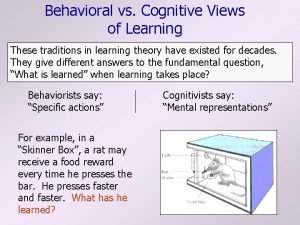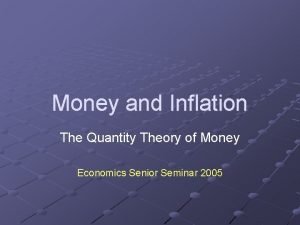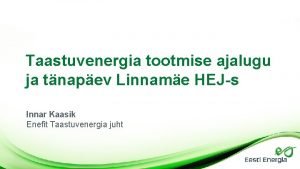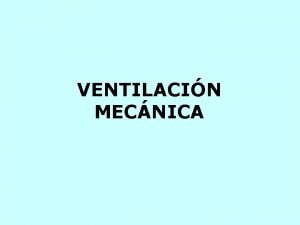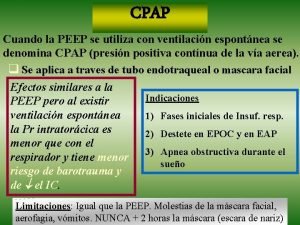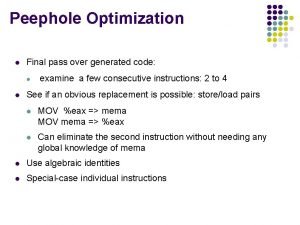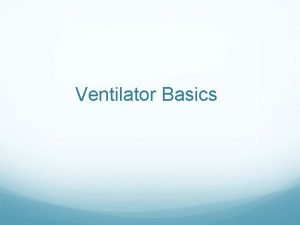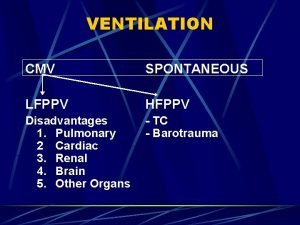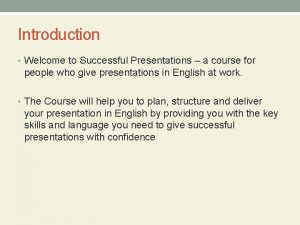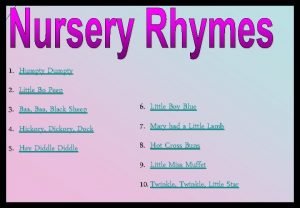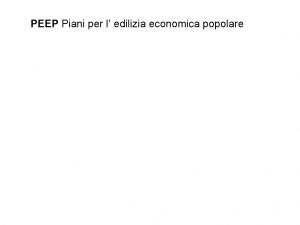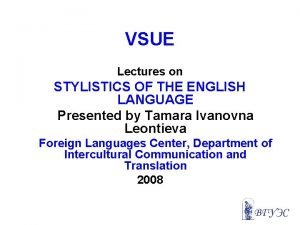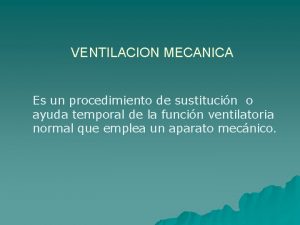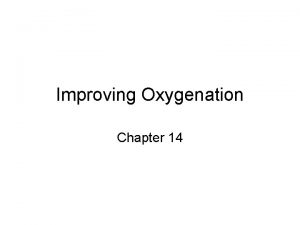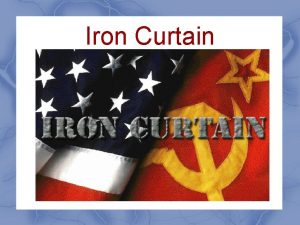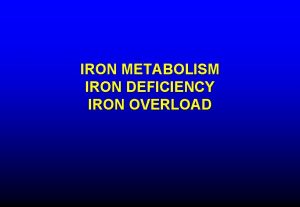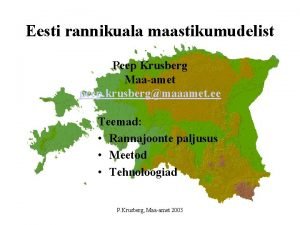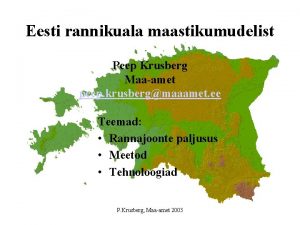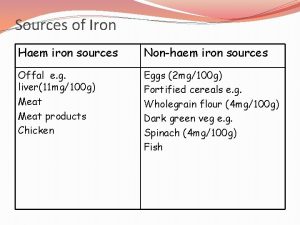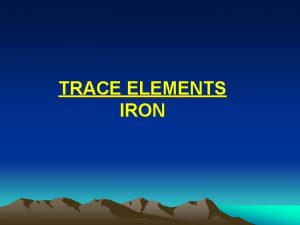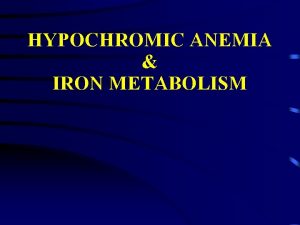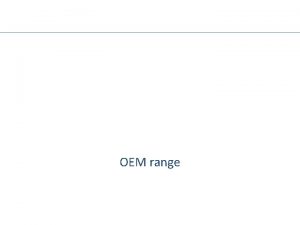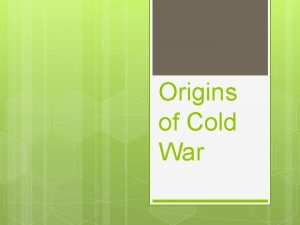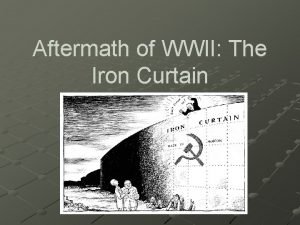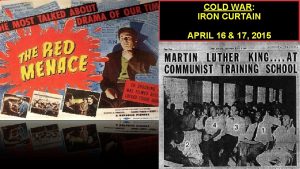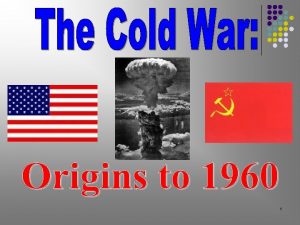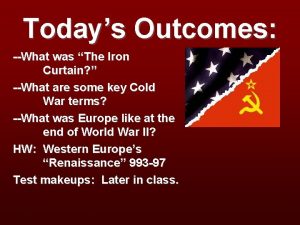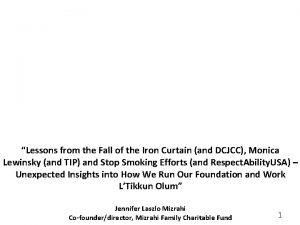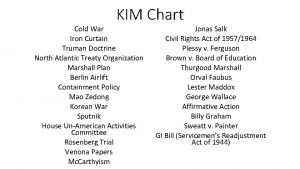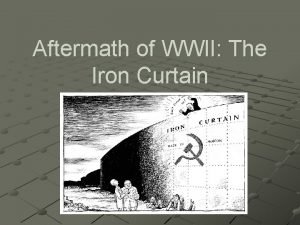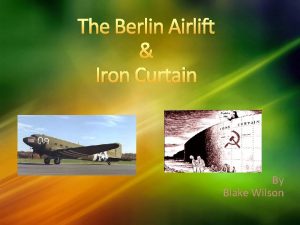Peep under the Iron curtain March 6 1946



























































- Slides: 59

Peep under the Iron curtain March 6, 1946 • Describe what you see in the political cartoon • Who is “Joe”? • What part of Europe is sealed off? • What does the wall symbolize?

THE COLD WAR BEGINS

THE COLD WAR The era of confrontation and competition between the U. S. and the Soviet Union when the threat of nuclear war created constant world tension United States Soviet Union vs. Democracy Communism

Rise of Super. Powers � � � The end of WWII left two great “super-powers” in control of world affairs: United States and Russia. They were considered superpowers because they possessed far greater military strength, economic power, & political influence that other nations. They became rivals in a “Cold War” that would last for more than 40 years. The war was “cold” only in sense that, because of nuclear weapons, but “never” confronted each other directly in open warfare. but they were often very close to war (Hotspots). Their global competition led to frequent world crisis in every continent either to stop the spread of communism (USA) or help the spread (USSR).

Differing Philosophies • Believed in democratic forms of government • Believed economic stability would keep peace in the word • Believed the free enterprise system was necessary for economic growth • Believed in a communistic forms of government • Believed in workers revolting (striking) against business owners and taking control of government • Wanted to control countries between Russia and Germany

The Social, Political, & Economic Causes of the Cold War � � � � Freedom: to make & do what you want with your money Own business Of Press Of Religion The people choose the government Little involvement in people’s lives United States � � � Wealth should be shared with everyone. Rich people are selfish Factories should be owned by the state Press CANT criticize govt Religion should not exist Allowed to only choose communist government Involved in every aspect of people lives Soviet Union


The Cold War, often dated from 1947– 1991, was a sustained state of political and military tension between the powers of United States and Soviet Union. Both wanted to be the most powerful nation in the world. But “never” went to war with each other.

The Cold War begins in Europe Yalta Conference � Potsdam Conference � Iron Curtain � Truman Response with containment � Truman Doctrine � Marshall Plan � Division of Germany � Formation of NATO & Warsaw Pact �

United against Hitler In 1941, Hitler invaded Soviet Russia. For a brief period until 1945 Russia united with the USA to defeat Hitler. IN WORLD WAR II THE FAR LEFT AND THE RIGHT TEAMED UP TO DESTROY FASCISM The Great Alliance of WW II

Post-War at the Yalta Conference In 1945, as the destruction of Germany was inevitable. The Leaders of the winning countries though to settle what should become of Germany and countries invaded by Hitler. They started to talk and they first met at Yalta. It came to be known as the Yalta Conference.

The Yalta Conference In Feb of 1945, Roosevelt, Churchill and Stalin met at Yalta. The “big three” laid plans for the postwar reconstruction of Europe. • Agreed to divide Germany into 4 separate occupation zone • Stalin to support for a new world peace keeping organization (negotiated at the Dumbarton Oaks Conference) • Accept a communist government in Poland until elections could be held after the war

The Yalta Conference

The Potsdam Conference was a meeting of the Allied leaders during World War II to decide what to do with Germany

The Potsdam Conference Serious differences between the Soviet Union and the U. S. arose, mainly over the future of Eastern Europe. � Stalin believed U. S. S. R should have control over E. Europe � Felt W. Europe had no direct interest in E. Europe; therefore; not interfere with Soviets activity � Soviet Red Army was already there The Soviets Point of View � Didn’t trust U. S & other W. countries �

The Potsdam Conference � � Americans Point of View Truman felt Stalin should keep his word on free elections in Poland Believed other European countries wanted to become democratic, free-market nations Believed Stalin was a brutal dictator and couldn’t be trusted They felt it was important to resist Stalin’s demands from the beginning, rather to wait before they become even more powerful.

The Potsdam Conference What did they agree on? 1. Divide Germany into 4 zones 2. Demobilize German Armed Forces - reduce size 3. Free Elections in Germany Democracy 4. Reparations - each side take as much as they want from own zone 5. Nazi Party made illegal 6. Polish Frontier - move Americans Point of View westwards. Make Germany smaller �

The Iron Curtain ØWith the failure of the Soviets to hold free elections in Poland the US to share its atomic secrets, the “Cold War” began in earnest. ØLocal communists came to power throughout Eastern Europe ØTrade & Communication between Eastern & Western were cut off The Iron Curtain came to stand for the division of Europe between East and West Europe; East was dominated by USSR, West supported USA. ØPeople of the East were restricted from leaving their countries, and people of the West who wanted to visit the East were restricted as well. ØChurchill says an “Iron Curtain” has descended across the continent l referring to Soviet control of Eastern Europe l no news allowed in or out of Soviet controlled territory

The Iron Curtain Physically, the Iron Curtain took the form of border defenses between the countries of Europe in the middle of the continent. The most notable border was marked by the Berlin Wall, which served as a symbol of the Iron Curtain as a whole

The Iron Curtain Poland, Romania, Czechoslovakia, Hungary Bulgaria and East Germany became satellite nations of Soviet Union (Communist Govt. ) “An iron curtain has descended across the Continent” – Prime Minister Winston Churchill

Truman Responds with Containment Policy � Truman and his closest advisers, feared that Soviets power in Eastern Europe was first steps in taking control of the world. � They were determined not to make the same mistake France and Britain had committed in failing to stand up against Nazi Germany and Hitler. � Truman’s attempt was not to overturn Communism where it already existed but to “contain it”. This became known as “containment policy”.

Fighting Communism � CONTAINMENT POLICY: The U. S. would work to stop the spread of communism. � 1. Truman Doctrine � 2. Marshall Plan � 3. NATO and other alliances

Truman Doctrine U. S. foreign policy established by President Truman saying the U. S. would protect democracies throughout the world “It must be the policy of the United States to support free peoples who are resisting attempted subjugation by armed minorities or outside pressures” -- Harry Truman

The Truman Doctrine & Domino Theory Truman Doctrine: U. S. would aid countries around the world who resist the spread of communism (like Greece and Turkey). � � Domino Theory: If the U. S. doesn’t fight communism, then countries will fall to communism like dominos.

Truman Doctrine It pledged that the United States would fight Communism worldwide Truman Doctrine was an extension to the U. S. foreign policy set forth in the Monroe Doctrine (1823) and the Roosevelt American tanks provided by the Truman Doctrine roll through. Corollary (1904)

Aid for Europe Secretary of State George Marshall toured Western Europe; witnessed widespread homelessness and famine. Fearing Europeans would turn to communism as an answer to their economic problems, Marshall proposed the U. S. help to rebuild Europe, leading to… Children in a London suburb, waiting outside the wreckage of what was

The Marshall Plan 1948 Plan to aid Europe—in ruins � Prevent countries from falling to communists � Aid American business � $17 billion to 16 countries in Europe(Soviet Union rejected) �

Marshall Plan U. S. plan for rebuilding Western Europe, and repelling communism after World War II Plan pumped billions of dollars into Western Europe for food and supplies Plan made U. S. heroes to people of Western Europe George C. Marshall

Marshall Plan aids Western Europe The Marshall Plan proved to be a great success Within 4 years, countries receiving aid saw a 41% higher industrial production than on the eve of World War II Countries were stabilized and exports were rising rapidly Countries receiving aid under


Eastern European countries were offered to take part in the Marshall Plan… What is this cartoon trying to say? … but Stalin and other East European leaders refused financial help from the United States

The Division of Germany, the Berlin Blockade and the Berlin Airlift, 1948

Germany Divided British Soviet French American After World War II, Germany was divided into four zones, occupied by French, British, American, and Soviet troops. Occupation zones after 1945. Berlin is the multinational area within the Soviet zone.

East and West Germany formed East Berlin West Germany East Germany West Berlin In June of 1948, the French, British and American zones were joined into the nation of West Germany after the Soviets refused to end their occupation of Germany.

In response, the Soviets cut off West Berlin from the rest of the world with a blockade. Eventual site of the Berlin Wall

Soviet Response � An angry Stalin responded with the: � BERLIN BLOCKADE 1948 - � sealing off a place (Berlin) to prevent goods or people from entering or leaving. � No car; trains; or boat was allowed to enter West Berlin zones.

Berlin Blockade & Berlin Airlift (1948 -49) � The Berlin Blockade was an attempt to starve West Berlin into submitting [giving up] to the communists � President Truman decided to avoid the blockade by flying in food and other supplies to the needy people of West Berlin � The Berlin Airlift successfully defied Stalin. � The Soviets then turned in their zone in Germany into an independent nation: German Democratic Republic, also known as “East Germany”

Berlin Airlift The airlift continued for 11 months before Stalin finally lifted the blockade The Berlin Airlift saved the people of West Berlin from falling under Soviet Union control Soviet blockade of West Germany convinced many Americans that the Soviets were trying to conquer other nations

NATO vs. WARSAW PACT In 1949, US and 11 other nations sign collective security agreement � The countries on the US’s side formed an alliance called North Atlantic Treaty Organization (NATO). � Agreed that if one member were attacked, the others would come to their defense. Attack to one nation was an attack against all 12 nations. � Purpose was mutual defense � � In response; the Soviet Union and 7 communist nations formed the : Warsaw Pact. They pledge that an attack against one was an attack against all. � Warsaw Pact ended in 1991 after the collapse of the Soviet Union. � NATO still exists. �

Birth of NATO North Atlantic Treaty Organization Formed in 1949 to protect Western Europe from Soviet aggression


The Warsaw Pact Poland, Romania, Czechoslovakia, Hungary Bulgaria and East Germany became satellite nations of Soviet Union The Warsaw Pact was the Soviet Union’s response to the creation of the North Atlantic Treaty Organization


The Cold War Heats Up

Nationalists vs Communists � Since 1927; Communist Chinese had been attempting to overthrow the Nationalist Chinese government. � They both fought for control of China.

Nationalist: Chiang Kai-shek Relied on U. S. aid � Struggled with inflation and a failing economy. � Suffered from weak leadership and poor morale. Warlords caused many problems defeated by Communist Mao, fled to Taiwan. �

Communist: Mao Zedong Relied on Soviet Aid � Attracted peasants with promises of land reform and improve food production. � Highly motivated leadership, defeated Nationalists-Chiang Kai Shek. Reds won! �

Cold War spreads to Asia 1949 -Fall of China: Communists take over Mao Zedong takes control of Chinese government from Chang Kai-shek’s Nationalist Party Half the world now appeared to be under Communist control The country of Korea became the next battleground in the Cold War China Korea



The Korean War A “Police Action” (1950 -1953) Kim Il-Sung Leader of North Korea “Domino Theory” If one country falls to communism, others around it will fall as well Syngman Rhee President of South Korea

�Many Americans were shocked that the United States had not done more to prevent the fall of China into Communist hands. �This affected the climate of opinion in the United States at the time of the outbreak of the Korean War.

The Korean War The Cold War gets HOT Korea was ruled by Japan from 1905 -1945 Following World War II, the Allies divided Korea at the 38 th parallel Soviets controlled North Korea and established a communist govt; U. S. sets up a democracy in South Korea

The. Korean War Cold War gets HOT On June 25, 1950, North Korea invades South Korea in an attempt to unify the country under communism rule Communist leaders did not expect the U. S. Would help With the approval of United Nations, Truman was able to send U. S. troops to S. Korea to resist the invasion. After 5 yrs since WWII, U. S. found their selves in another war

N. Korea forces had overrun most of S. Korea Truman sends General Douglas Mac. Arthur to command American forces. General Mac. Arthur landed his forces north of the N. Korean army. This took them by surprise and forced them to retreat. Then Mac. Arthur counterattacked by

The Korean War Mac. Arthur’s advances brought China into war Chinese enter war on the side of North Korea Mac. Arthur planned to blockade mainland China and to assist Chiang Kai-Shek to recapture control of the mainland Macarthur was even willing to use the atomic bomb Truman was willing but for extreme circumstances. Otherwise, against it. Macarthur criticized Truman for wanting a “limited war” An artillery officer directs UN troops as they drop white phosphorous on a Communist-held post in February 1951.


Consequences of the Korean War Dwight D. Eisenhower was elected as President of the US. He promised voters he would find a way to end the Korean War ends in a stalemate An armistice was signed ending the war in July 1953 Korea was divided at the 38 th parallel (still today). Korea remains divided today. S. Korea is successful industrial economy; while N. Korea is isolated Korean War marked an important turning point in the Cold War U. S. began a major military build-up; began using military force to prevent spread of communism

The armistice ending the war was finally signed in 1953 at Panmunjom, a village sitting on the demilitarized zone (DMZ) between N & S Korea. Only 160 miles long.
 A peep under the iron curtain analysis
A peep under the iron curtain analysis The iron curtain
The iron curtain March march dabrowski
March march dabrowski Usii
Usii The iron curtain symbolized
The iron curtain symbolized The iron curtain map
The iron curtain map Political cartoon of the iron curtain
Political cartoon of the iron curtain The iron curtain
The iron curtain Stettin in the baltic
Stettin in the baltic Guiding questions iron curtain speech
Guiding questions iron curtain speech Iron curtain
Iron curtain Iron curtain cold war
Iron curtain cold war Containment definition cold war
Containment definition cold war Iron curtain countries
Iron curtain countries Mass of iron in an iron tablet
Mass of iron in an iron tablet Iron sharpens iron friendship
Iron sharpens iron friendship 1980-1946
1980-1946 Expérience de asch 1946
Expérience de asch 1946 Maksud berkerajaan sendiri
Maksud berkerajaan sendiri Römische zahlen 1-15
Römische zahlen 1-15 Fati sau fa-ti
Fati sau fa-ti Kurikulum 1946, kurikulum 1957, dan kurikulum 1961
Kurikulum 1946, kurikulum 1957, dan kurikulum 1961 1946 born
1946 born Lbb 1950/10
Lbb 1950/10 Dator 1946
Dator 1946 Hungary inflation rate 1946
Hungary inflation rate 1946 Apakah tujuan ordinan pelajaran 1952 diwujudkan
Apakah tujuan ordinan pelajaran 1952 diwujudkan Iso 1946
Iso 1946 Nueva resurrección david alfaro siqueiros
Nueva resurrección david alfaro siqueiros Carta da paz social 1946
Carta da paz social 1946 Apakah elemen yang dicadangkan dalam dasar cheeseman 1946?
Apakah elemen yang dicadangkan dalam dasar cheeseman 1946? Komponen utama pada komputer generasi pertama adalah ... *
Komponen utama pada komputer generasi pertama adalah ... * Tolman ritchie and kalish (1946)
Tolman ritchie and kalish (1946) Hungary inflation rate 1946
Hungary inflation rate 1946 Jägala juga
Jägala juga Peep ventilacion
Peep ventilacion Que es el peep
Que es el peep Ventilator waveform analysis
Ventilator waveform analysis What is peep in ventilator
What is peep in ventilator Peep lepikult
Peep lepikult Sigh breaths on jet ventilator
Sigh breaths on jet ventilator Peep
Peep Peep hole optimization __________
Peep hole optimization __________ Peep project
Peep project P peak in ventilator
P peak in ventilator Peep siitam
Peep siitam Pcmv ventilator
Pcmv ventilator Abcd model presentation
Abcd model presentation What is peep
What is peep Twinkle twinkle little star piani
Twinkle twinkle little star piani Peep tomingas
Peep tomingas Epap and peep
Epap and peep Types of antonomasia
Types of antonomasia Soporte ventilatorio total
Soporte ventilatorio total Chapter 14 oxygenation test bank
Chapter 14 oxygenation test bank Mechanical ventilation definition
Mechanical ventilation definition Peep learning together
Peep learning together Peep programme
Peep programme Psup in ventilator
Psup in ventilator Các châu lục và đại dương trên thế giới
Các châu lục và đại dương trên thế giới
